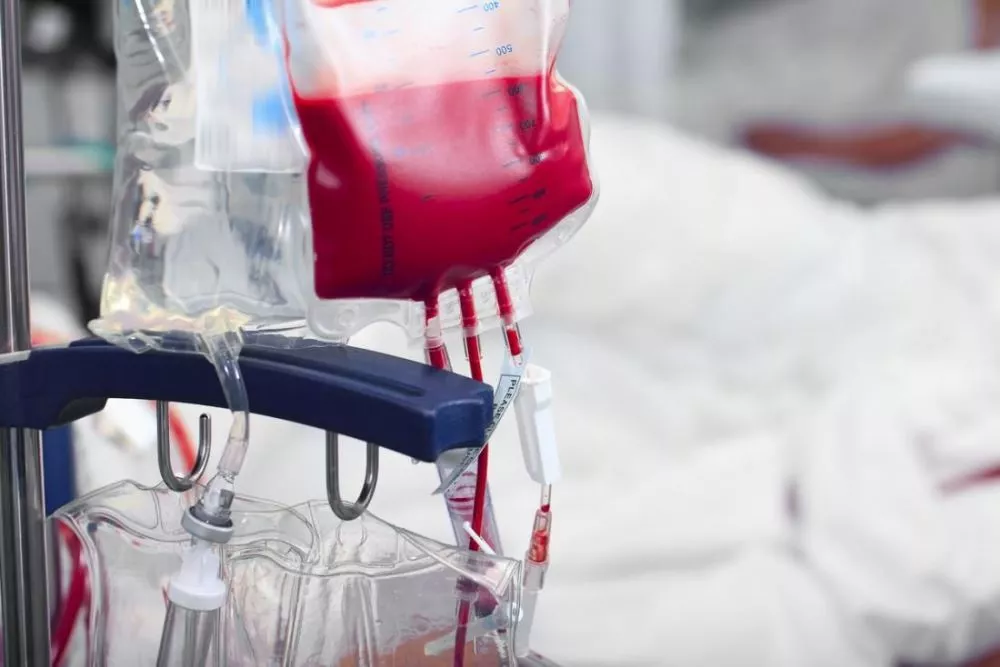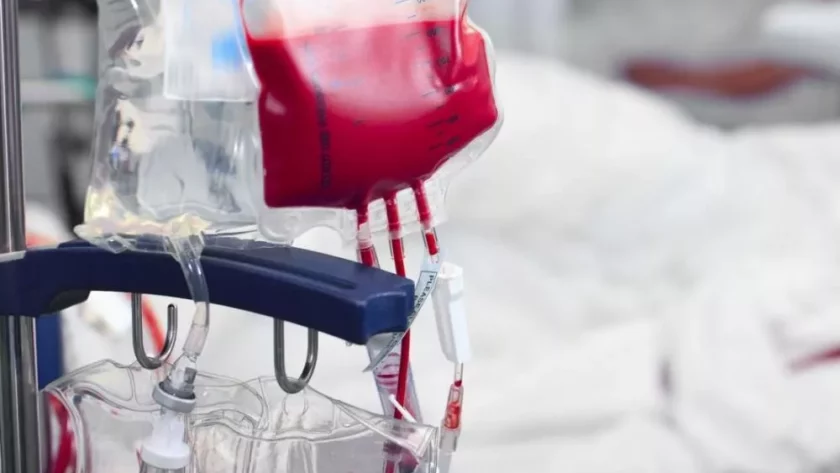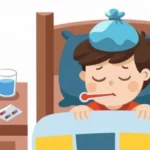What Is Thalassemia?
Contents
Thalassemia is an inherited disorder (a genetic disorder) of the blood – that can come from a person’s parents.
In this, our body makes an abnormal form of hemoglobin (Hemoglobin is a protein in our red blood cells that work to carry oxygen).
This disorder results in large numbers of RBCs being destroyed, which causes anemia.
Anemia is a condition, where there is a lack of sufficient healthy RBC due to which not enough oxygen reaches the body tissues.
It has symptoms like fatigue, dizziness, body pain, pale skin, and trouble breathing.
Also, people who have thalassemia may have mild or severe anemia. severe anemia is capable to damage the organs, leading to death.
NOTE: Thalassemia affects approximately 4.4 out of every 10,000 live births throughout the world.
And in 2015, about 280 million people had thalassemia, of which more than 4 lakh were seriously ill.

2. Types
There are 2 main types of thalassemia, Alpha, and Beta-thalassemia.
Alpha Thalassemia
Alpha thalassemia is happen due to the alpha-globin gene removal, which leads to the reduction or absent production of alpha-globin chains.
In order to make alpha-globin, you need to have four genes, two from each parent.
Alpha globin gene has 4 alleles and disease severity ranges from mild to severe depending on the number of removal of the alleles (1).
There are 4 main types of alpha thalassemia include:
| Types of Alpha Thalassemia | Signs | causes |
| Hemoglobin H | lack of energy and exercise intolerance | Can causes – jaundice, splenomegaly, lack of proper nutrition |
| Silent carrier | It has no sign, but you can give the damaged gene to your child. | When a person receives one of the genes from a parent |
| Hydrops fetalis | It can occur before birth. In this condition, babies are more likely to be born stillborn or die shortly after birth. | |
| Alpha thalassemia trait | Minor anemia |
Alpha thalassemias were mainly found in people from – Southeast Asia, the Middle East, China, and Africa (3).
Beta Thalassemia
It occurs when the body can’t make homozygous mutations of the beta-globin, resulting in the total absence of beta chains.
There are 2 main types of beta-thalassemia are:
Beta-Thalassemia Intermedia
It is a mild form. It is major caused by both beta-globin genes. People with thalassemia intermedia don’t need blood transfusions.
In this form, some haemoglobin A is produced.
Beta-Thalassemia Major
Its symptoms will be mild to severe. Babies born with two mutated beta haemoglobin genes are usually healthy at birth, but it starts showing after 6 months of life.
It is also known as Cooley anaemia.
Research suggests that approximately 1.5% (80 to 90 million people) worldwide are carriers of β-thalassemia.
3. Thalassemia Minor
There are not many symptoms in minor thalassemia, but their haemoglobin is a little low. And it can affect anyone.
Alpha thalassemia minor: In this two-gene is missing.
Beta thalassemia minor
One gene is missing in it (symptoms are mild to severe) It can be caused by a heterozygous mutation in which beta chains are underproduced.
The severity of alpha and beta-thalassemia depends on how many of the four genes for alpha globin or two genes for beta-globin are missing.
4. Thalassemia major
It is a congenital disease, In this, the formation of haemoglobin is not possible, due to which children become victims of anaemia.
If the child has repeated health issues and takes monthly blood transfusions.
Iron chelator medicines have to be taken so that iron does not accumulate in the body.
In India, About 10 to 12 thousand children are born with this type.
5. Reasons
The main reason behind this disease is genes. but how?
In normal cases, we get half the gene from both the father and mother.
But in this disorder, a person gets a bad gene that comes from generation to generation.
If a person gets an unhealthy gene from one of their parents, then the person becomes a victim of half thalassemia.
But if a person gets one bad gene from their mother and one bad gene from their father, then it shows complete thalassemia.
NOTE: If both parents are carriers of thalassemia, then their child has more chance of getting this disease.
6. Symptoms
The signs and symptoms have to depend on the type and severity of the condition.
In mild cases symptoms such as:
- Pale skin
- fatigue
- loss of appetite
Serious symptoms such as – In symptoms occur due to low haemoglobin
- milk to severe Headache
- Slow growth: Anemia slows down the growth of a child. Puberty may also be delayed in children with thalassemia (4)
- chest pain
- Jaundice
- dark urine
- Enlarged liver and spleen
- Bone problem
According to WHO, there are around 3% beta-thalassemia carriers and about 4% Hb E/beta-thalassemia carriers in Bangladesh (5).
7. How To diagnose?
Your doctor may perform these tests, some include:
- In a blood test, the lab technician looks at your blood to see if the shape of the RBC is strange or abnormal
- Complete blood count (CBC) reveals anaemia
- Physical examination, which depends on the type and how severe the case is
- DNA test
- A doctor may perform high-performance liquid chromatography (HPLC)
8. Treatment
Its treatment depends on what type is it and how serious is this disease.
People with thalassemia traits (minor anaemia) do not require medical care after the initial diagnosis is made.
A person with major thalassemia needs this treatment:
Blood transfusion
In this, a person has to have a blood transfusion 1 to 2 times a month.
But it also has some side effects – Over time, blood transfusion leads to iron accumulation in the body, which can damage the different organs.
Bone marrow transplant
In this, a donor’s healthy blood-forming cells and put into the patient’s bloodstream, where they begin to grow and make healthy RBC, WBC, and platelets.
It can eliminate the need for lifelong blood transfusions (7). but also has some risks – chronic immunosuppressive therapy, graft failure, etc (8).
Chelation therapy
This involves removing the iron that gas accumulated in the body.
Due to blood transfusion, iron starts accumulating in various parts of the body, which increases the chance of heart, liver, and other organ damage.
Gene therapy
It is the latest research that can be a solution to many gene-related disorders. Gene therapy is being studied for this disorder (9).
Gene therapy involves changing the genes inside your body’s cells to prevent and treat disease.
Cholecystectomy
If the patient has an increased amount of Hemoglobin breakdown and bilirubin deposition in the gallbladder.
This cholecystectomy is a surgical procedure to remove your gallbladder.
Some other treatments include:
- Splenectomy
- Genome editing techniques
9. Home-remedies
These home remedies will help you manage thalassemia. such as:
Diet
However, there is no diet that can cure this disorder, but eating a healthy rich diet can help in managing your thalassemia.
Here is what you eat during thalassemia:
- A plant-based diet, with low-fat
- Vitamin D, and calcium, to prevent possible risk of bone, you may need a supplement, first talk to the doctor.
- Green tea can reduce iron absorption from the intestine tract.
NOTE: Vitamin C helps in iron excretion from the gut, but increases the higher risk for fatal arrhythmias.
A doctor may suggest you folic acid contains food like green leafy vegetables, oranges, grapefruit, and lemons that are rich in folate.
Avoid these foods include:
- Avoid bread, junk food
- Fortified cereals, and juices.
NOTE: Avoid excessive iron-rich foods, because, in this disorder, iron is already stored in the body, which can damage your organs.
10. Complications
Untreated, thalassemia is a major cause of heart, liver, and other organ failures.
Possible complications include:
- More prone to infection
- Jaundice and gallbladder stone
- Heart problems and abnormal heart rhythm may be associated with severe thalassemia (10).
- Thin bone
- A slow growth rate may be seen in babies
- Nerve system complications (11)
However, blood transfusions can help control some symptoms but carry a risk of side effects from too much iron (12)
11. Prevent thalassemia during pregnancy
In most cases, you cannot prevent thalassemia, but it can be prevented with a few simple tests during pregnancy
When women become pregnant, then doctors may perform, some tests called electrophoresis or HPLC.
If women are found positive for the beta-t carrier, they should check their partner if both of them are positive for the beta-t trait.
NOTE: Then the doctor may perform some tests, which will tell whether the fetus in the womb has thalassemia major or not.
If the baby has a thalassemia major, the mother should opt for medical termination of pregnancy and prevent the birth of a child with a thalassemia major.
This can be an emotional time for the parents, so it can be prevented by doing a simple test called electrophoresis in the first 3 months of pregnancy.
Learn More – Pregnancy Diet: 8 Super Ideal Foods That Are Eaten During Pregnancy
BOTTOM LINE
Anaemia has symptoms like fatigue, dizziness, body pain, pale skin, and trouble breathing.
Babies born with two mutated beta haemoglobin genes are usually healthy at birth, but it starts showing after 6 months of life.
Your doctor can give you more information about it. They also tell how you manage or treat it, and how to improve life quality. etc.




